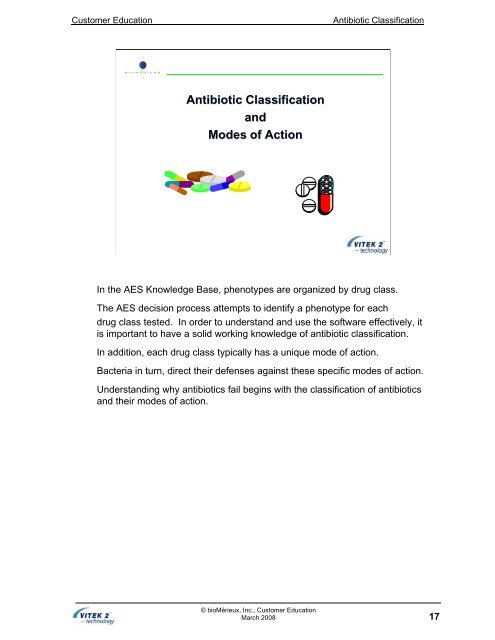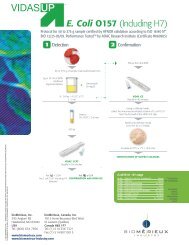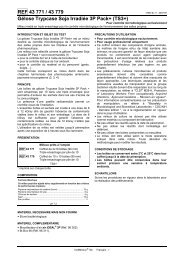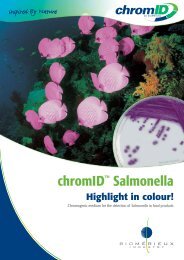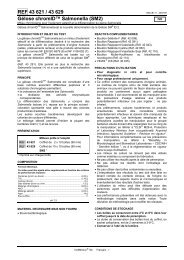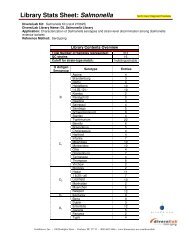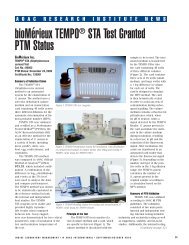Antibiotic Classification and Modes of Action - bioMerieux
Antibiotic Classification and Modes of Action - bioMerieux
Antibiotic Classification and Modes of Action - bioMerieux
Create successful ePaper yourself
Turn your PDF publications into a flip-book with our unique Google optimized e-Paper software.
Customer Education <strong>Antibiotic</strong> <strong>Classification</strong><br />
<strong>Antibiotic</strong> <strong>Classification</strong><br />
<strong>and</strong><br />
<strong>Modes</strong> <strong>of</strong> <strong>Action</strong><br />
In the AES Knowledge Base, phenotypes are organized by drug class.<br />
The AES decision process attempts to identify a phenotype for each<br />
drug class tested. In order to underst<strong>and</strong> <strong>and</strong> use the s<strong>of</strong>tware effectively, it<br />
is important to have a solid working knowledge <strong>of</strong> antibiotic classification.<br />
In addition, each drug class typically has a unique mode <strong>of</strong> action.<br />
Bacteria in turn, direct their defenses against these specific modes <strong>of</strong> action.<br />
Underst<strong>and</strong>ing why antibiotics fail begins with the classification <strong>of</strong> antibiotics<br />
<strong>and</strong> their modes <strong>of</strong> action.<br />
© bioMérieux, Inc., Customer Education<br />
March 2008<br />
17


